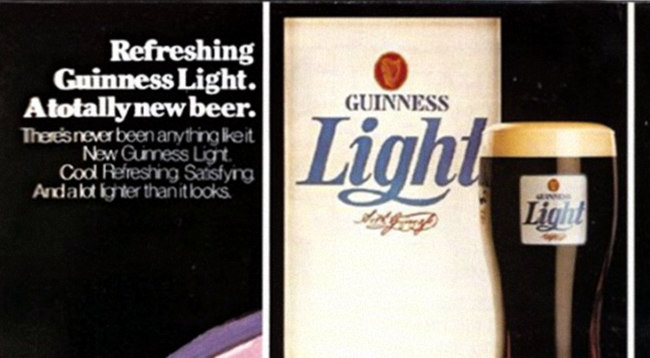Here’s all the writing that’s entertained, educated or amused us in the world of beer and pubs in the last week, from marketing disasters to beer nerds in the wild.
For Good Beer Hunting Matt Curtis profiles Bristol brewery Lost & Grounded, putting them into context in terms of both the beer scene and their place in this particular city:
Keller Pils is one of two Lagers in Lost and Grounded’s core range, which, unusually—and perhaps bravely, giving to their current popularity—for a modern British brewery, doesn’t include a single Pale Ale or IPA… [The] German-leaning styles that lead Lost and Grounded’s portfolio are joined by beers including Hop-Hand Fallacy, a Belgian-influenced Farmhouse Ale, and No Rest for Dancers, a Dubbel masquerading on tap lists as a Red Ale. Although the influences in Lost and Grounded’s beers are clear, they also each have a point of difference that sets them apart.
(We probably latched on to this piece especially because, despite having been in Bristol ourselves for several months, we’ve still only just scratched the surface of what’s going on with its beer.)

This next piece was published on 3 October but we noticed it too late for last week’s round-up. It’s an extract from a memoir by marketing consultant David Gluckman who in 1974 worked with Guinness to work out why nobody wanted to drink a new product called Guinness Light that market research had promised would be a huge hit:
Everything was perhaps best explained by a single young man we interviewed in one of our focus groups in Galway. He described his first encounter with Guinness Light: “I walked into my local bar and it was decked out with Guinness Light material. It was everywhere: posters, and beer mats. There were even special Guinness Light pint glasses. It all struck a chord. I remembered seeing a TV advert for it and I decided to order a pint. It appeared in its special glass and looked pretty tasty. But as I put it to my lips a hand tapped me gently on the shoulder and a man said ‘You’re cheating. You’re drinking ladies’ Guinness.’”

And while we’re at it, here’s another piece from just the wrong side of last weekend: for the Washington Post Jason Wilson gives an account of a tour of Vermont breweries undertaken in the company of his beer geek brother where the obnoxiousness of the culture overwhelmed them:
We wander outside to the deck, and as we sip, a short guy in a long coat with a trimmed beard stands next to us holding forth to his significantly taller girlfriend and another couple, all of them in their 20s. “So she had a 10 percent sour double bock, and I ordered a barley wine. And I was, like, so surprised. I mean, does anyone still make a barley wine?” Ha-ha-ha-ha, they all laugh. I hear plenty of wine snobs and cocktail snobs hold forth all the time. But rarely do I get a chance to hear a beer snob in his natural habitat, peacocking in full roar. Tyler and I edge closer to eavesdrop.
“So how long have you guys been into beer?” asks the beer snob’s friend.
“Oh, at least since 2013, 2014. I mean, my dad was a beer drinker, but never anything good.” Yuengling is his dad’s favorite beer. “I mean, Yuengling is okayyy … if there’s nothing else in the fridge.” Chuckles all around. “I mean, they use caramel malt, but at least you can drink it and not be repulsed.” More chuckles.
We’re including this piece beacause it’s nicely written, not because we agree with it, by the way. So often, these articles about the ‘winefication of beer’ are written remotely — hacked together listicles or Hot Takes — and this piece benefits from field reporting and the personal angle. Having said that, it still reads to us like two judgemental beer nerds being judgemental about other beer nerds. But perhaps that’s the joke.

We first spotted the fictional Heisler beer in an episode of My Name is Earl about a decade ago and have been fascinated by it. For Draft magazine Zach Fowle investigates the Hollywood prop house that makes not only Heisler but also Cerveza Clare, Pensburg and the classic Premium Light:
Real-world breweries pay big bucks to have their brands represented on-screen—it cost Heineken a reported $45 million to get James Bond to forego his trademark vodka martini for one of the brewery’s stubby green bottles in the 2012 movie Skyfall. But even if the money behind product placement is substantial, it’s often more trouble than it’s worth. That’s because beer—which has been known, on occasion, to get people drunk and do silly things—is often used as a plot device that breweries might not approve of…
A nice little story: a few months ago we watched a conversation unfold on Twitter about the beer being pulled in an archive photo of the Oxford Bar in Edinburgh — what was Leith Heavy, and how might someone go about reviving it? Last week author Ian Rankin pulled the first pint of a version of the beer brewed by Steven Hope with the blessing of the original brewer’s daughter.
A thought-provoking nugget: on the one hand, we have bigger breweries aping the look and feel of ‘craft’; on the other, there are small American breweries trying to evoke the everyman appeal of ‘macro’. The lines are grow ever more blurred.
Brewery takeover news: Western Australian brewery Feral has been acquired by Coca-Cola Amatil, a major soft drinks manufacturer which bottles Coke in Asia and the region. (Via The Crafty Pint.)
And finally, via Twitter, a new craft brewing manifesto from Denmark:
Denmark's independent brewers have set up a trade group called "Liberated Beer". Lots of good stuff in the manifesto: pic.twitter.com/raY0MxwTix
— The Beer Nut (@thebeernut) October 9, 2017





